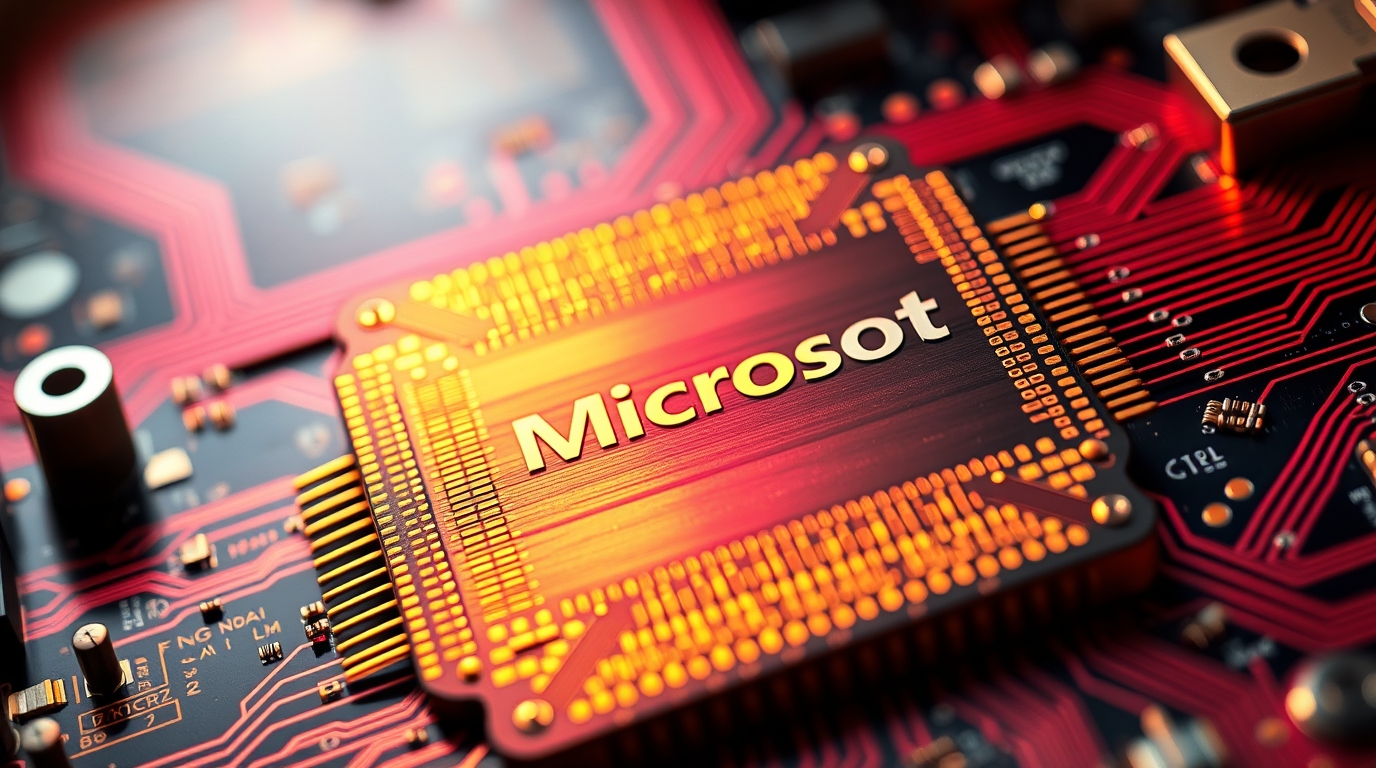Microsoft Quantum Processor Majorana 1 Unveiled

Strong 8k brings an ultra-HD IPTV experience to your living room and your pocket.
Quantum computing has long been considered the next frontier in technological advancement. With the ability to process complex computations at speeds unattainable by classical computers, quantum processors have the potential to revolutionize industries ranging from medicine to material science. Among the tech giants investing in this field, Microsoft has made a groundbreaking advancement with its latest quantum processor, Majorana 1. This processor is not just another addition to the world of quantum computing; it represents a significant leap in stability, scalability, and overall performance.
Understanding Quantum Computing and Quantum Processors
Before diving into the specifics of Majorana 1, it is essential to understand the fundamentals of quantum computing and how it differs from classical computing.
What is Quantum Computing?
Quantum computing utilizes the principles of quantum mechanics to perform computations that would take traditional computers an impractical amount of time. Unlike classical computers, which use bits (0s and 1s) as the smallest unit of information, quantum computers use qubits. A qubit can exist in a state of 0, 1, or both simultaneously (a phenomenon known as superposition), enabling quantum computers to process massive amounts of data in parallel.
The Role of a Quantum Processor
A quantum processor is the core component of a quantum computer, responsible for performing calculations using qubits. Unlike classical processors that rely on transistors, quantum processors manipulate quantum states to perform operations. The stability and reliability of these processors determine the efficiency of quantum computers.
Introducing Microsoft’s Majorana 1
Microsoft has taken a unique approach to quantum computing by developing a new type of quantum processor based on Majorana particles. This innovative approach sets Majorana 1 apart from its competitors and offers a promising pathway toward scalable and fault-tolerant quantum computing.
What Makes Majorana 1 Unique?
Unlike traditional quantum processors that rely on superconducting qubits (as used by Google and IBM), Majorana 1 is built on a topological quantum architecture. This architecture leverages the properties of Majorana fermions, which were first theorized in 1937 by Ettore Majorana. These particles act as their own antiparticles, enabling a more stable quantum state that is less prone to errors.
The Majorana Particle Advantage
One of the biggest challenges in quantum computing is error correction. Traditional qubits are highly sensitive to external disturbances, making them prone to decoherence (loss of quantum information). Microsoft’s approach with Majorana fermions offers topological protection, reducing the likelihood of errors and making the qubits inherently more stable. This could significantly decrease the need for extensive error correction, making large-scale quantum computing more feasible.
The Development Journey of Majorana 1
Microsoft has been researching and developing Majorana-based qubits for nearly two decades. The company’s breakthrough came with the creation of the world’s first topoconductor, a material necessary for stabilizing Majorana fermions. This new class of material combines indium arsenide (a semiconductor) and aluminum (a superconductor), allowing for the controlled existence of Majorana particles.
After extensive research and experimentation, Microsoft successfully built Majorana 1, a quantum processor capable of supporting topological qubits. Though it currently features only eight qubits, the potential for scalability is immense. Microsoft envisions scaling this technology to a quantum computer with over one million qubits, a milestone that could unlock true quantum advantage.
Potential Applications of Majorana 1 in Quantum Computing
The impact of Majorana 1 extends beyond just theoretical research. If successfully scaled, this quantum processor could revolutionize several industries by solving problems that classical computers cannot.
1. Drug Discovery and Material Science
Quantum computing can simulate molecular interactions at an atomic level, making it invaluable for drug discovery and material development. Majorana 1 could accelerate the search for new medicines by accurately predicting how different compounds interact, reducing the time and cost associated with clinical trials.
2. Optimization Problems
Industries such as logistics, finance, and manufacturing rely on complex optimization problems to enhance efficiency. Quantum processors like Majorana 1 can process multiple variables simultaneously, providing optimal solutions much faster than traditional methods.
3. Cryptography and Cybersecurity
As quantum computers advance, traditional encryption methods may become obsolete. However, Majorana 1’s robust architecture could contribute to developing quantum-resistant cryptographic techniques, ensuring data security in a post-quantum world.
4. Climate Modeling and Sustainability
Quantum processors have the potential to improve climate modeling, allowing scientists to simulate environmental changes with greater accuracy. This could lead to more effective strategies for combating climate change and developing sustainable solutions.
Microsoft’s Roadmap for Quantum Computing
Microsoft’s quantum computing strategy revolves around its Azure Quantum platform, which aims to integrate quantum computing with cloud services. By making quantum computing accessible through the cloud, Microsoft hopes to accelerate innovation and drive real-world applications.
Additionally, Microsoft has been selected by DARPA (Defense Advanced Research Projects Agency) for the final phase of the US2QC program, which focuses on building a fault-tolerant quantum computer. This selection underscores Microsoft’s leadership in quantum research and its commitment to achieving practical quantum computing within the next decade.
Challenges and Future Prospects
Despite the promising advancements of Majorana 1, challenges remain in the path to large-scale quantum computing.
1. Scalability
While Microsoft’s quantum processor is designed for scalability, reaching the milestone of one million qubits will require overcoming significant engineering and manufacturing hurdles.
2. Error Correction
Although Majorana fermions reduce error rates, quantum error correction will still be necessary to maintain stability in large-scale quantum systems.
3. Hardware and Infrastructure
Quantum processors require extremely low temperatures (near absolute zero) to function correctly. Developing efficient cooling systems and improving infrastructure for quantum computing remains a challenge.
4. Competition from Other Tech Giants
Microsoft is not alone in the race for quantum supremacy. Companies like Google, IBM, and startups like IonQ are also making strides in quantum computing, each with their own approach. Whether Majorana 1 will outpace these competitors remains to be seen.
Conclusion:
Microsoft’s Majorana 1 represents a significant breakthrough in the field of quantum computing. By leveraging Majorana fermions and topological qubits, this quantum processor has the potential to overcome some of the biggest challenges in quantum computing, such as stability and error correction. With continued research, investment, and collaboration, Microsoft aims to scale this technology to a fault-tolerant, million-qubit quantum computer that could unlock unprecedented possibilities across various industries.
As we look toward the future, the advancements of Majorana 1 signal a major step toward making quantum computing a practical reality. Whether in medicine, cybersecurity, climate science, or beyond, the potential applications of this technology could reshape the world as we know it.
Note: IndiBlogHub features both user-submitted and editorial content. We do not verify third-party contributions. Read our Disclaimer and Privacy Policyfor details.







